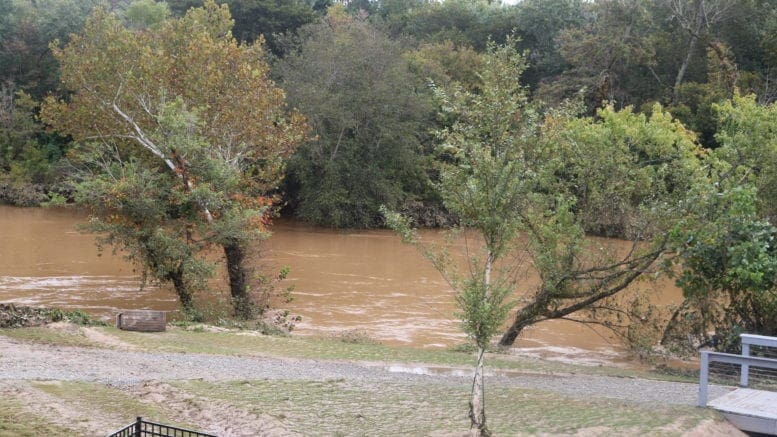Cobb County is no stranger to flood damage. We had major flooding in 2009, and last September we were slammed with floods that were serious enough to make residents eligible for SBA disaster loans.
So it’s fitting that the theme of the last weekday of Georgia Severe Weather Preparedness Week is flood preparedness.
The National Weather Service posted the following about flooding in Georgia:
Although not widely known, flooding kills more people than any other weather hazard. The majority of deaths from flooding occur when people become trapped in automobiles that stall while driving through flooded areas. Nearly half of all flood fatalities are vehicle related. Flooding is usually divided into two categories. These categories are flash flooding and river flooding. Both of these can cause death, injury, and property destruction.
Flash floods are usually caused by slow moving thunderstorms or thunderstorms that move over the same area one after the other, called training. These floods usually occur within 6 hours of heavy rainfall and are usually more life threatening as a result. Areas most prone to floods are mountainous streams and rivers, urban areas, low-lying areas, and culverts. A good example of flash flooding is the flooding in metropolitan Atlanta in September of 2009.
River flooding is caused by the gradual increase in the water level of a river or creek. These floods usually occur seasonally with general rains or with heavy rainfall from tropical systems. A good example of river flooding is the flooding that affected south Georgia after Tropical Storm Alberto in 1994.
The NWS gave the following flood safety tips:
- Know what to listen for. A Flood Watch or a Flash Flood Watch means that conditions have been detected that could lead to flooding of a certain area. A River Flood Warning or a Flash Flood Warning means that flooding is imminent and you should take action immediately. You can monitor NOAA Weather Radio or any local radio or TV station to get the latest information.
- If flooding occurs get to higher ground. Get out of areas subject to flooding such as canyons, dips, and low spots.
- Avoid areas already flooding, especially if the water is fast flowing. Do not attempt to cross flowing streams. Road beds may be washed out due to the flooding. Never try to cross flooded roadways. Remember, turn around, don’t drown.
- If your vehicle is suddenly caught in rising water, leave it immediately and seek higher ground.
- Be especially cautious at night when it is harder to see flood dangers.
- Additional information on flood safety can be found in the Flood Safety Checklist from the American Red Cross.
- Visit the Weather Ready Nation Flooding Page to learn how to protect yourself and your family from flooding and learn more about flooding across the United States.



